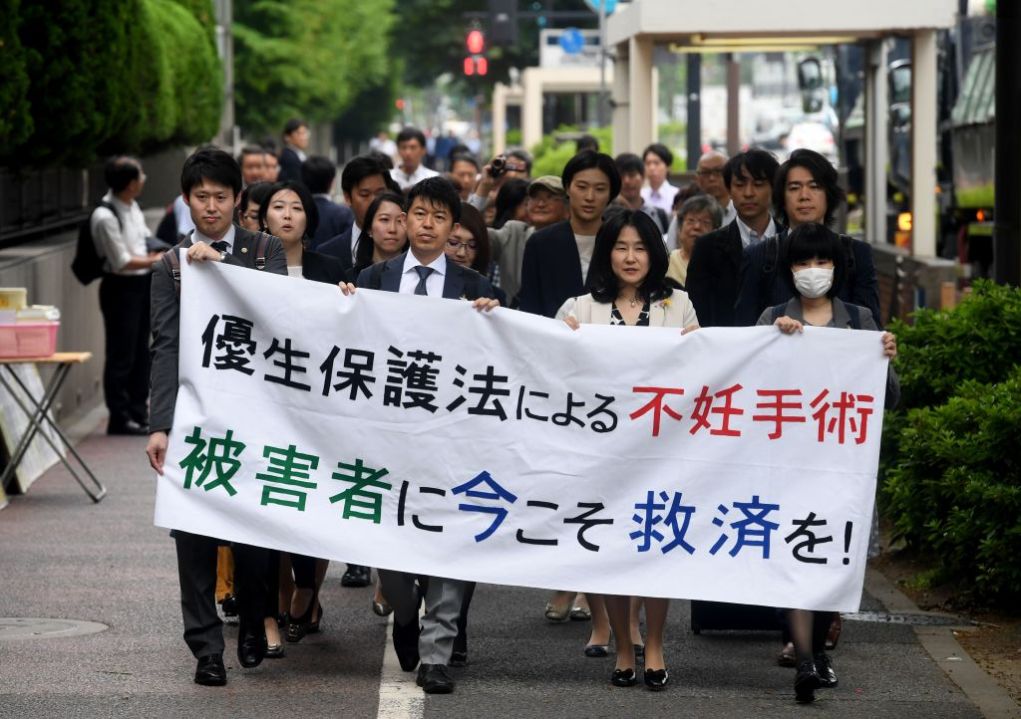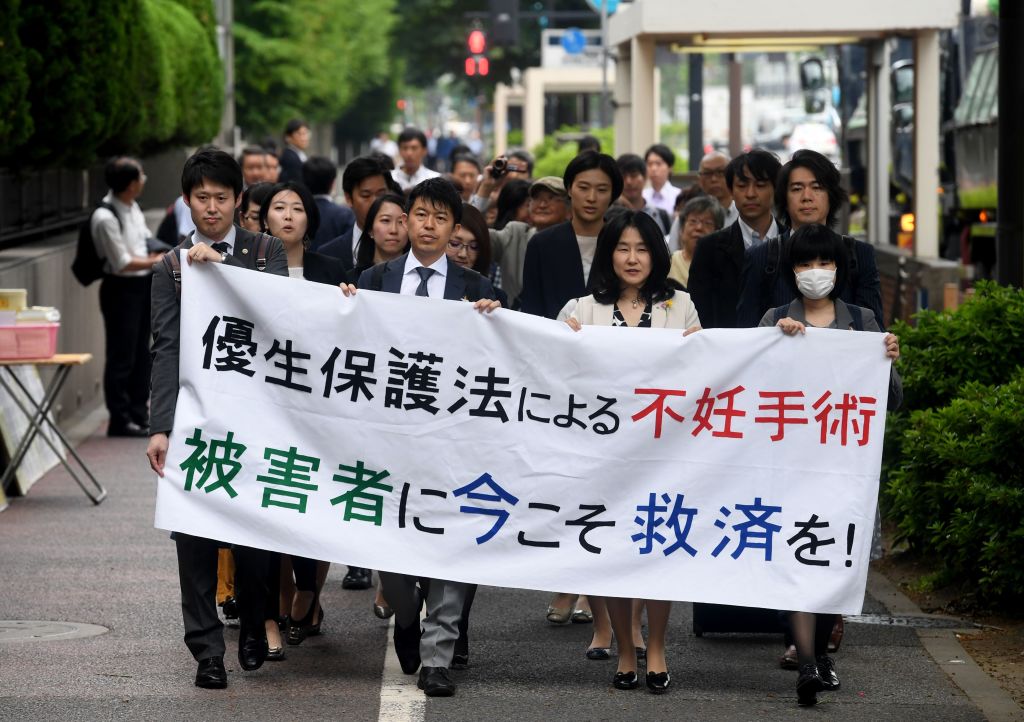A Japanese government report has revealed that over a 50-year period, under a policy of forced sterilisation, 16,500 people were operated on without their consent. The youngest, a boy and a girl, were just nine. Another 8,000 apparently gave their consent, though under what sort of pressure is unclear. A further 60,000 women had abortions due to hereditary illnesses. This was all done under a eugenics law enacted in 1948 and not repealed until the 1990s.
Victims of the policy, often young girls spirited away to clinics for mysterious operations they didn’t understand, have been campaigning for compensation for decades. Last year a court awarded damages of 27million yen (£150,000) to be divided between three elderly victims, overturning a lower court decision that ruled that a 20-year statute of limitations invalidated their claim.
The 1,400-page report is the most detailed admission yet of a grim episode in Japanese history. Some of the stories of wrecked lives that have emerged are heartbreaking. It has prompted questions about why the policy was ever enacted and why it took so long for it to be repealed.
The former question is somewhat lost in the mists of history, but it seems to have been a combination of factors. Prewar eugenic ideas imported from the West made some impression in a country where notions of the blood purity of the Yamato (ethnic Japanese) prevailed in certain quarters. Then there was the desperate plight of war-ravaged Japan, which led some to believe the country couldn’t survive without some sort of engineering of the population. The justificatory wording of the Japanese law ‘to prevent the birth of poor-quality descendants’ is repugnant now but may have made some sense in a country that had been fire and atom bombed to near obliteration.
Japan was hardly alone. It’s easy to forget, and disturbing to be reminded, how widespread eugenics was at that time. Germany and Sweden enacted similar legislation and it was at least considered, sometimes at a high level, in many other countries, including the UK (the BBC featured three pro-eugenics speakers including former Conservative minister L.S Amery in a 1931 debate). There were many adherents in the US, and some allege that General McCarthy’s occupying authorities, who seemed to be concerned about a potential population explosion in Japan, gave the policy at least tacit approval.
The internal politics of it are hard to discern. Koichi Nakano, lecturer in politics at Tokyo’s Sophia university believes the law was probably ‘bureaucratic or technocratic’ in origin rather than party political. The 1948 eugenics law, an update on the 1940 version, was formally proposed by the Socialist party. Factions of the right were strongly opposed, as it presented Japanese people as merely animals, and not, as they believed, descended from gods.
As to why the law lasted so long on the statute books, Nakano ascribes this to ‘inertia’. Most (though not all) of the forced sterilisations are believed to have taken place in the 1950s and 60s and it appears that law makers either didn’t get round to repealing the legislation, or perhaps weren’t even aware of it. Or they may just have been reluctant to put a spotlight on the issue, reminding people of a dark episode in history, and perhaps prompting fresh legal action. Better to leave a dusty, embarrassing old law to moulder in the archives.
In this it recalls the other hugely embarrassing legal admission of recent days, the revelation that Japan’s age of consent was just 13 and had been for a hundred years. That anachronistic ordinance somehow endured until the story was picked up by the world’s media. That got things moving. A bill that included a package of sexual reform measures passed the diet unanimously last week. The age of consent is now 16.
Then there were the revelations that emerged in the wake of the assassination of former prime minister Shinzo Abe that his party, the LDP, which the current prime minister Fumio Kishida also belongs to, had close and secret associations with the controversial Unification Church (‘Moonies’) stretching back 60 years. That provoked a debate about the extent of the influence of shadowy pseudo religious groups in Japan.
Episodes like these (and the Korean ‘comfort women’ controversy is far from closed) are embarrassing to Kishida, who has made much of his desire to bring Japan into line with western norms and use positive images of his modern, forward and outward looking nation to help project his soft power plans. Kishida has been outspoken on Japan’s commitment to Ukraine, and has promised to dramatically raise Japan’s defence spending and work more closely with the US and others.
He was evidently delighted to host the G7 summit in Hiroshima recently. The world leaders and their spouses were given a tour of the local sights, which alongside the famous Genbaku dome, included pristine shrines, meticulously sculpted gardens and traditional tea houses of great antiquity. It’s the pure, unsullied image of the past that the Japanese leader wants to present to the world. Unfortunately, the dark and disturbing aspects of that past have a habit of intruding.








Comments